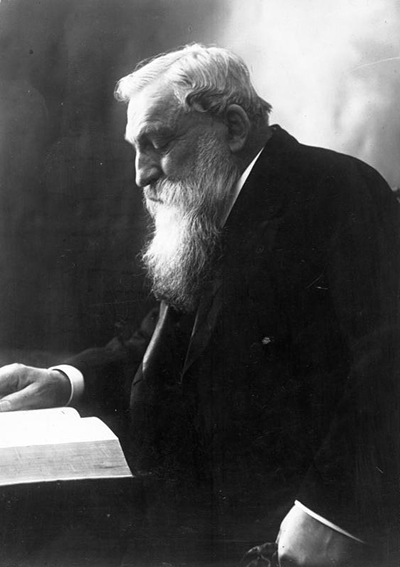Rodin's life was captured through a large series of photographic portraits. This item came late on, in around 1914. It is a carefully planned portrait, that the sculptor would no doubt have been delighted with.
We immediately see the elderly figure of Rodin, his hair and beard now a perfect tone of white. The artist is smartly dressed, with a black suit and white shirt, with his sleeves just showing through at the bottom. He is stood up, and appears to be reading. The light is carefully directed onto his forehead, though casting a shadow on the left hand side of his face. We see all the signs of age such as wrinkles across his forehead and plump cheeks. He has become more portly in his later years but still looks relatively happy and healthy, with his beard styled in much the same way that it had been for the past few decades. It is not known who took this photograph, but records would exist around the visitors to his studio and this would probably provide a likely answer to that question.
Rodin would invite some of the most famous photographers to his studio in order to help his working process. They would be directed by him over what to capture, but normally it would be his development sculptures. Whilst visiting he would also ask for portraits of himself as well, from time to time, but that was never the main reason for their invitation. In some cases, when he was particularly struck by a portrait, he might reward the photographer with one of his own works rather than just monetary payments, as a sign of respect from one creative to another. That said, he mainly saw photography as a reproduction tool at this stage, rather than an artistic discipline to rival the likes of oil painting and traditional sculpture.
As an additional method to creating sculptures, he would even draw and paint over these prints in order to direct later ideas. A huge number of photographs were uncovered in his mansion and this now forms a part of the collection of the Musee Rodin. Efforts have been made in recent years to collate all of these items together, date and document them as a means to learning even more about this artist's life. It is rare to have so much photographic evidence available from a 19th century artist, and these can also help to add interest to exhibitions of his work, bringing to life some of his sculptures and drawings with real life photography.




